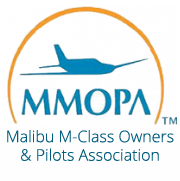I have the privilege of serving on the Malibu & M-Class Owners and Pilot’s Association Safety Committee. Along with 6 other Piper PA46 instructors, we were tasked with two things last year leading up to the MMOPA Convention in Colorado Springs last October. The first was to develop a Master Aviator Program (more on that in a later article). The second was to develop Operating Practices for the Piper PA46 fleet that we as instructors could all get on board with to teach the same thing, allowing everyone in the fleet to fly approaches and patterns the same way.
When I started instructing in the piston Piper PA46 line (the Malibu, Mirage, and Matrix), I was surprised to find that there were no recommendations anywhere that I could find for approach and pattern power settings and airspeeds. This led to some experimentation on my part trying to find out what works well for the airplane. I had originally been given good training in a Malibu, but hadn’t flown one for several years, so my numbers were a bit rusty.
I have been in the Cirrus world for a very long time. One thing I greatly appreciated from an instructing point of view about Cirrus was the abundance of guidance the factory gives instructors and pilots on how the airplane is supposed to be flown. All CSIPs and all Cirrus pilots should (theoretically) be teaching and flying the exact same way.
I was quite surprised that Piper didn’t put out similar information. I wasn’t as familiar with MMOPA at the time, but was surprised they didn’t have any information either.
I apparently wasn’t the only one with a desire to have a little bit more standardization.
So, without further ado, here are the MMOPA Operating Practices that the Safety Committee put together. If you are a new Piper PA46 pilot, these numbers are what you will expect to use when you do your Initial training. If you are a seasoned Piper PA46 pilot, you probably fly these numbers, or pretty close to them already.
These are tried and true power settings and speeds for the approach phase and landing phase. They work. That was the goal of the Safety Committee: put down in writing something repeatable to enhance safety. I believe we have accomplished that.


I am new to PA-46P, I would like any proven tips on a hot start, it’s a
1995 Mirage.
Yesterday after re-fueling and both the engine and OAT were very hot
it took several attempts before it started.
Thanks, Brian
Brian, since you have the Lycoming engine, the best way to hot start it is as follows:
1. Leave the mixture idle cutoff and open the throttle a bit more then you would for a normal start.
2. Do not prime (do not push the mixture rich at all before cranking)
3. Engage the starter and as soon as the engine starts “coughing and wheezing”, go about 3/4 of the way forward on the mixture
4. Once the engine gives you a good catch, go all the way rich
5. Reduce the throttle for 1,000 RPM and continue with your normal checklist
I appreciate that you explained if you are a rookie Piper PA46 pilot, you may anticipate utilizing these numbers throughout your initial training. My best friend is looking for some info, this should help him. I appreciate that you helped me learn more about PA46 Pilot Training.